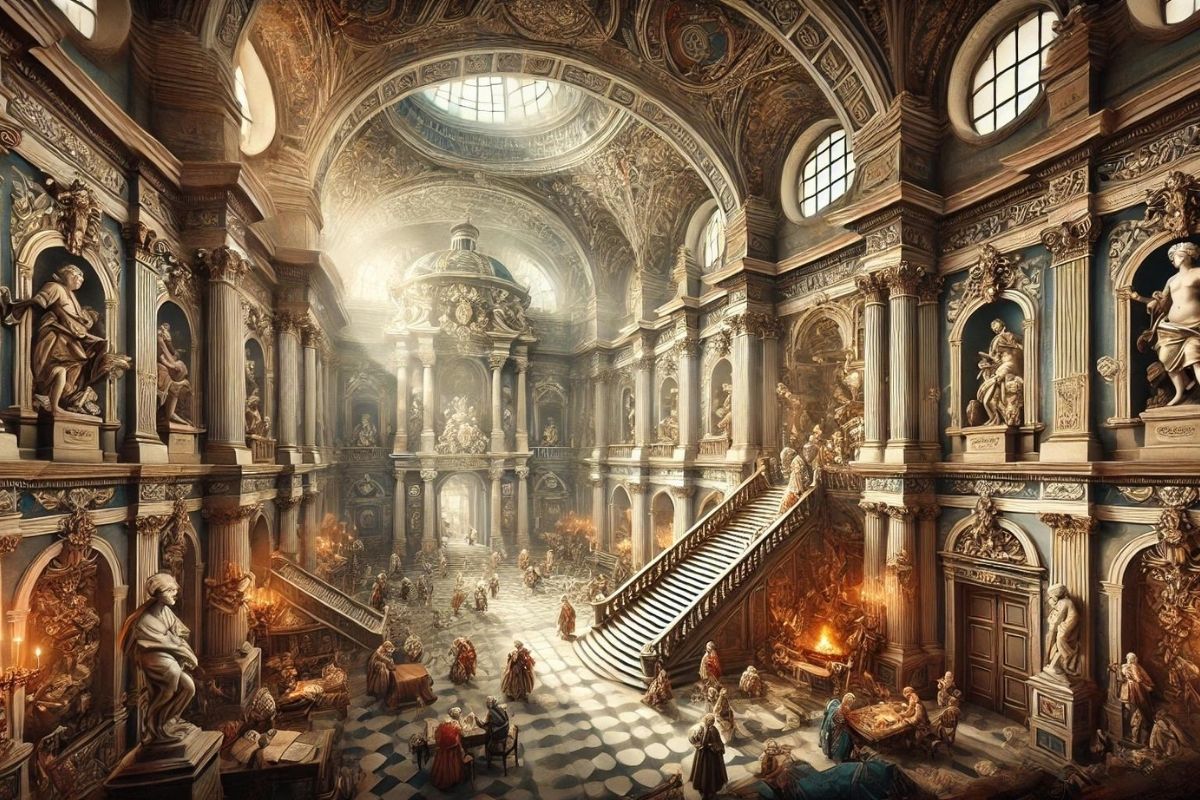As the reverberations of the Renaissance blurred, another time of workmanship burst onto the European scene, portrayed by its sensational power, multifaceted subtleties, and close to home profundity. This time, known as the Baroque period, traversed from the late sixteenth 100 years through the mid-eighteenth 100 years. Its effect on the scene of workmanship and engineering is stupendous, passing on a legacy that keeps on impacting present day plan and style. The The Artistic Legacy of the Baroque Period is a demonstration of an age where imagination exceeded all rational limitations, and specialists looked to summon feeling however much they tried to show magnificence.
Defining Attributes of Baroque Art
Baroque craftsmanship is prestigious for its sensational utilization of variety, light, and shadow, alongside a more profound feeling of development and feeling contrasted with its ancestors. This style was a stylish decision as well as an essential reaction to the social and political environments of the time, especially by the Catholic Church, which involved Baroque’s extraordinary personal draw as a way to counter the developing impact of Protestantism.
Craftsmen like Caravaggio, Rubens, and Rembrandt became experts of the chiaroscuro strategy, controlling light and dull to carry a three-layered quality to their materials. This procedure was not simply about authenticity; it was tied in with making an air that could encompass the watcher, bringing them into a dynamic and frequently dramatic scene.
The development inside Baroque works of art is another central attribute. Whether in the wild scenes of fight painted by Rubens or the sensitive twirls of Bernini’s models, development is a critical component that catches the embodiment of Baroque’s emotional style. These works were intended to be something other than outwardly captivating; they were intended to mix the spirit and incite a response, causing the watcher to feel as though they were important for the actual scene.
Baroque Engineering: Magnificence on an Excellent Scale
Baroque design mirrored the pomposity of the period’s specialty. Designers, for example, Gian Lorenzo Bernini and Francesco Borromini split away from the decent straightforwardness of Renaissance structures, picking rather for complex shapes, lively enhancements, and clearing veneers that told consideration.
The Congregation of San Carlo alle Quattro Fontane in Rome, planned by Borromini, embodies Baroque compositional goals with its undulating walls, complex bends, and elaborate specifying. Likewise, Bernini’s St. Peter’s Square in Vatican City utilizes an extensive corridor to embrace guests, emblematically contacting the majority and bringing them into the otherworldly focus of the Catholic Church.
These compositional accomplishments were not simply structures; they were explanations of force, renown, and otherworldly enthusiasm. The great scope and plushness of Baroque engineering were intended to stunningness and move, serving both strict and political plans by putting forth for the watcher the power and magnificence of the congregation or state.
Influence on Music and Performance
The Baroque period likewise left a significant effect on music and execution, with writers like Johann Sebastian Bach, Antonio Vivaldi, and George Frideric Handel molding the eventual fate of Western old style music. Baroque music, known for its elaborate tunes, complex polyphony, and emotional differences, reflected the artistic aspirations of the visual expressions.
Handel’s “Savior” and Bach’s “Brandenburg Concertos” are great representations of how Baroque music joins elaborate melodic methods with a close to home profundity that looks to significantly move the crowd. The period was likewise essential for the improvement of show, a class that joins music, dramatization, and picturesque plan into one overpowering display — particularly in accordance with the Baroque ethos.
Baroque’s Persevering through Impact on Present day Art
The legacy of Baroque craftsmanship reaches out a long ways past its verifiable period and keeps on impacting current fine arts. The showiness and feeling of Baroque should be visible in contemporary movie and theater, where sensational lighting, elaborate sets, and sincerely charged accounts draw direct motivation from Baroque style.
Craftsmen like Peter Paul Rubens and Caravaggio have affected innumerable current specialists, who get from their methods of variety and organization to bring out comparative sensations of amazement and miracle. The unique intricacy of Baroque craftsmanship moves present day watchers to draw in with workmanship on a tangible and close to home level, demonstrating that the standards of Baroque style are immortal.
The Baroque period was a period of artistic upheaval, set apart by developments that tested and extended the limits of artistic articulation. Its legacy is a rich embroidery of visual, engineering, and melodic structures that keep on resounding with and move craftsmen, performers, and draftsmen across the globe. As we ponder the The Artistic Legacy of the Baroque Period, obviously its effect is both persevering and significant, a genuine festival of human innovativeness and articulation.


